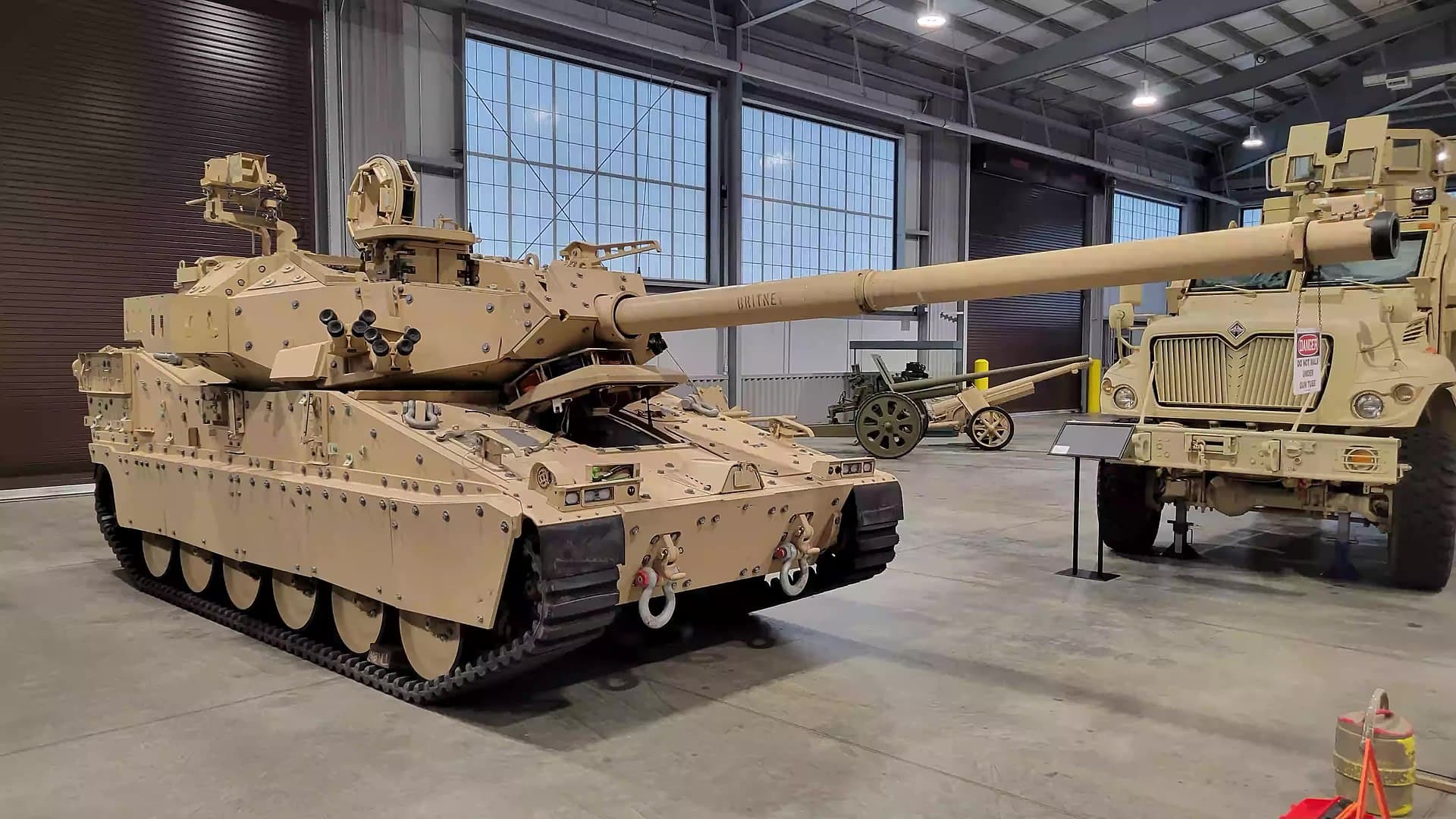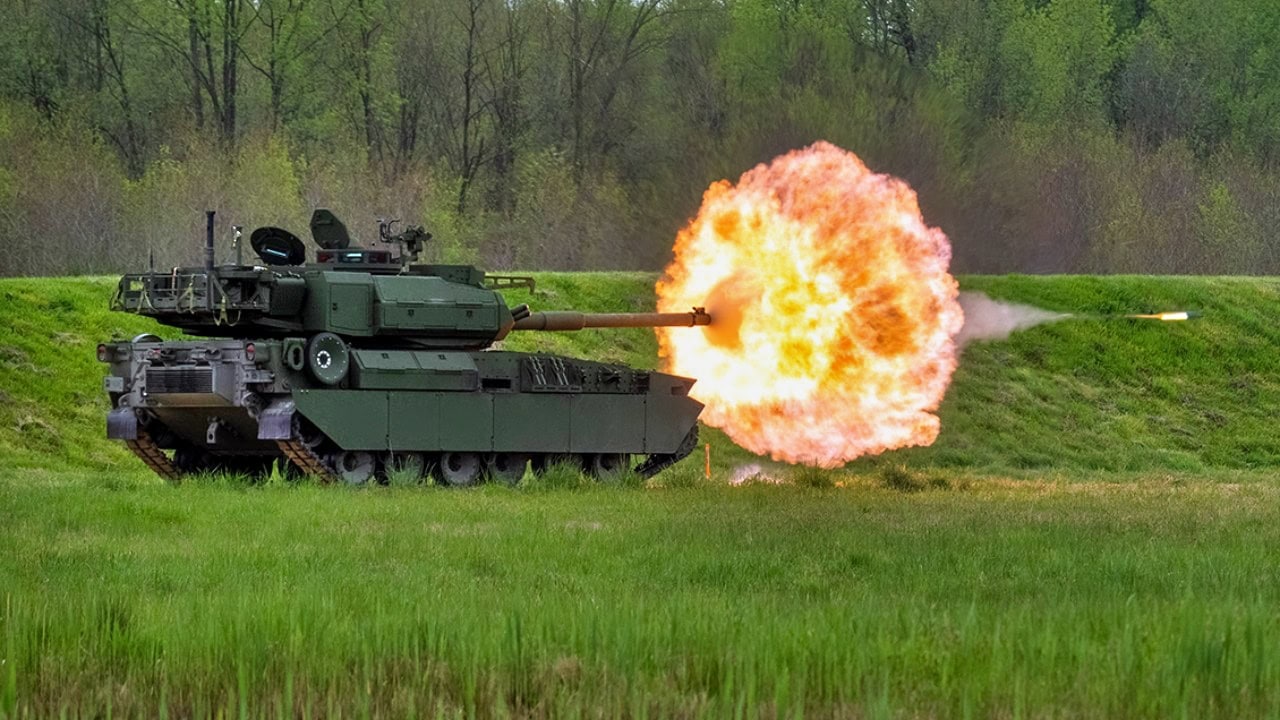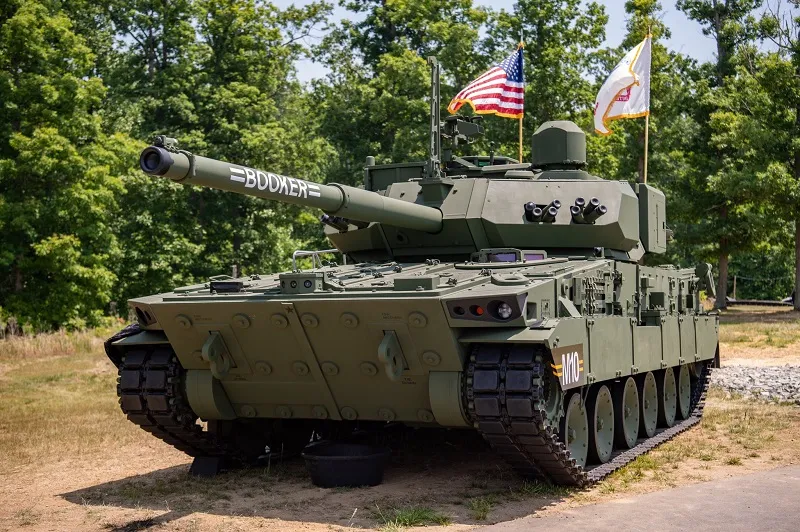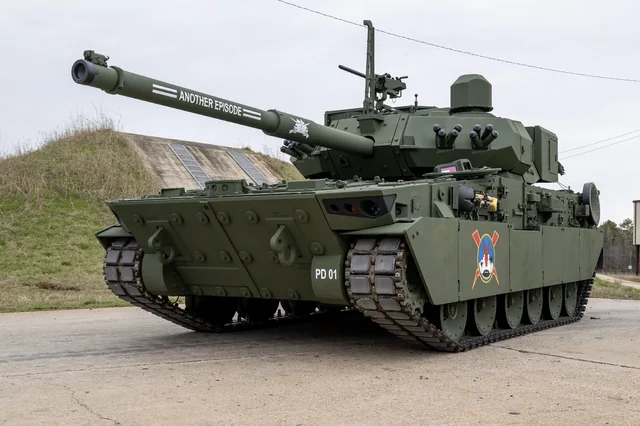M10 Booker Breakdown: $Billions Burned on a ‘Light’ Tank That Sinks Roads and Doctrine
Initially billed as a “light tank” intended to provide direct fire support for light infantry units in expeditionary scenarios, the M10 Booker ultimately tipped the scales at a staggering 42 tons, rendering it incompatible with air mobility doctrines and unusable in many of the rapid-deployment scenarios for which it was originally conceived.
(DEFENCE SECURITY ASIA) – The United States Army’s decision to terminate further procurement of the M10 Booker armored combat vehicle underscores a broader reckoning within the Pentagon over costly acquisition missteps and a growing need for operational agility in an era of great power competition and contested logistics.
Initially billed as a “light tank” intended to provide direct fire support for light infantry units in expeditionary scenarios, the M10 Booker ultimately tipped the scales at a staggering 42 tons, rendering it incompatible with air mobility doctrines and unusable in many of the rapid-deployment scenarios for which it was originally conceived.
Despite repeated references to it as a light tank by defence industry officials and senior military leadership, analysts have increasingly highlighted the discrepancy between the vehicle’s weight class and its intended operational niche.
“As early as 38 tons, the M10 Booker was already too heavy for air-dropping missions envisioned by Department of Defense planners at the outset of its development,” remarked a defence analyst familiar with the program.
The Army’s formal cancellation of the planned 500-unit fleet of M10 Bookers was confirmed by Army Secretary Dan Driscoll during a high-level Department of Defense roundtable, where he laid bare deep concerns over the vehicle’s strategic misalignment, escalating costs, and battlefield impracticality.
Driscoll offered a blunt assessment of the program’s failure, declaring it a “classic example of sunk cost fallacy and the Army doing something wrong,” a rare admission in an institution where program inertia often supersedes tactical relevance.
Although 80 units had already been delivered by contractor General Dynamics Land Systems, the program’s momentum was decisively halted due to its inability to meet key performance and deployment requirements central to the U.S. Army’s evolving concept of multidomain operations.

Originally developed as part of the Mobile Protected Firepower (MPF) initiative, the Booker was supposed to be a nimble, air-transportable armored platform capable of being air-dropped by C-130 Hercules aircraft into austere environments in support of light forces facing peer threats.
Instead, the M10 Booker emerged as a quasi-main battle tank in weight and form factor, without the corresponding armor protection or firepower typically associated with platforms like the M1 Abrams, while simultaneously lacking the air mobility that justified its existence in the first place.
“We got a heavy tank,” Driscoll conceded, underscoring the disconnect between conceptual intent and technical execution that has plagued multiple U.S. military procurement programs in recent decades.
Driscoll criticized the Army’s failure to promptly recognize and correct the vehicle’s drift from its intended role, stating that institutional inertia and a reluctance to confront developmental flaws allowed the program to spiral unchecked.
The cancellation of the M10 Booker is now being viewed within the context of a sweeping modernization drive led by Defense Secretary Pete Hegseth, who is championing a shift away from Cold War-era armor paradigms toward networked, modular, and unmanned systems better suited for high-intensity conflicts in the Indo-Pacific and Eastern Europe.
This strategic pivot places a premium on agile and rapidly deployable platforms, such as autonomous combat vehicles, long-range precision fires, and survivable unmanned aerial systems, while simultaneously culling legacy programs that no longer offer proportional battlefield value.

Concerns about the M10 Booker’s excessive weight became even more pronounced following a high-profile infrastructure failure at Fort Campbell, a pivotal Army base along the Kentucky-Tennessee border that hosts elite air assault units and regularly conducts large-scale readiness exercises.
Reports confirmed that multiple small bridges within Fort Campbell’s training corridor collapsed during live maneuvers involving the M10 Booker, raising alarm over the vehicle’s impact not just on mission execution, but also on the physical infrastructure required to support it.
Military engineers familiar with the incident reported that at least two bridges—designed during the Cold War to accommodate lighter vehicles—buckled under the 42-ton combat weight of the Booker, which significantly exceeds its originally anticipated operational mass.
Although the vehicle was engineered to support high-speed infantry assaults in expeditionary environments, its sheer weight and structural footprint have now exposed a critical vulnerability in the Army’s broader deployment infrastructure, particularly at bases unprepared to absorb such load stresses.
“Bridges built in the 1960s and ’70s simply weren’t designed to withstand repeated stress from platforms this heavy,” said a senior Army engineer, adding that emergency repair teams had to be dispatched to restore access to critical sectors of the installation.
The infrastructure collapse at Fort Campbell has since triggered a nationwide infrastructure audit across Army facilities slated to host or support the M10 Booker, amid fears that other aging bases may similarly be incapable of accommodating the platform without major and costly reinforcements.

This engineering failure adds a new and deeply tangible dimension to the vehicle’s already troubled legacy, fueling renewed debate over the cost-efficiency and strategic merit of manned armored platforms in future high-intensity, logistics-constrained theatres.
For military analysts and procurement strategists alike, the bridge collapses represent more than an isolated incident—they signal a systemic failure to synchronize platform development with operational basing realities, a disconnect that could prove disastrous in the face of near-peer confrontation.
The M10 Booker’s downward trajectory has also reopened questions about how the U.S. Army balances firepower, survivability, and mobility in its force structure—particularly when it comes to equipping rapidly deployable units with armor that doesn’t compromise speed or flexibility.
Armed with a 105mm rifled main gun, the Booker offers credible direct-fire capability against fortified targets and light armored vehicles, and is supported by a semi-automatic loader capable of utilizing standard NATO ammunition types.
Its secondary armament suite includes a coaxial 7.62mm machine gun and a roof-mounted 12.7mm (.50 caliber) heavy machine gun, enabling effective defense against infantry threats and low-flying drones.
The platform features modular add-on armor, offering scalable protection against small arms fire, artillery fragments, and medium-grade explosive devices—though it still lacks the comprehensive armor profile found on full-scale main battle tanks.


Powered by an 800-horsepower diesel engine, the M10 Booker can reach speeds of up to 72 km/h, and its hydropneumatic suspension allows for stable firing on the move and smooth maneuverability over rugged terrain.
Integrated with advanced thermal imaging, laser rangefinders, and a network-centric battlefield management system, the vehicle was designed to operate seamlessly alongside infantry and other armored units in digitally connected operations.
Despite these features, the platform’s inability to meet air-transportability standards for the C-130 Hercules, which remains the workhorse of U.S. tactical lift capability, rendered it strategically obsolete for many rapid deployment missions.
It is now primarily transportable via larger aircraft like the C-17 Globemaster III, further constraining its use in operations that depend on strategic surprise, flexible basing, and mobility through contested environments.
In retrospect, the M10 Booker has become emblematic of a broader institutional challenge facing Western militaries—how to adapt legacy procurement mindsets to a rapidly evolving threat landscape defined by speed, survivability, and multidomain integration.
Unless future platforms are developed in lockstep with the infrastructure, doctrine, and digital ecosystems that support them, the Pentagon risks repeating a cycle of high-cost investments with limited battlefield payoff—at a time when every dollar, and every ton, must count.
— DEFENCE SECURITY ASIA


